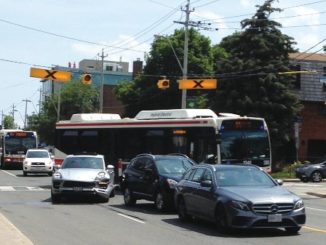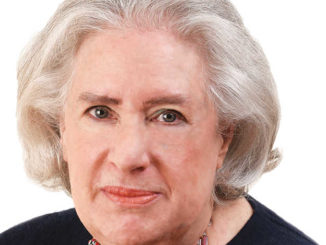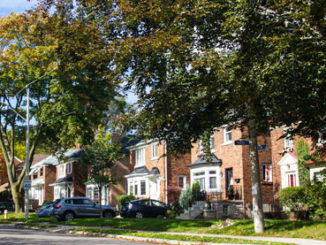As we know, Leaside is ground zero for major intensification. Every new development puts a heavy additional strain on the existing sewer system, which was already insufficient to deal with current neighbourhood usage.
At the LPOA’s July board meeting, we heard an important presentation from Debra Satok, a resident of the North York neighbourhood of Armour Heights, who has spent years investigating the causes of basement flooding. If you’ve ever had a flooded basement after a heavy rainstorm, you know just how disastrous and costly the experience can be. Insurance may or may not cover the damage and (after the deductible) some of the cost, but it never erases the experience.
Our sanitary sewers were not designed for excessive groundwater, which collects during heavy rainstorms. They are connected to each home by a sanitary sewer ‘lateral’, or pipe, which – under normal rainfalls – allows waste water to flow away from each house into the sewer. But when the rain is particularly heavy, and the soil saturated, waste water may instead flow into the basement through basement floor drains, sinks, or toilets. This can occur even if you have a disconnected downspout, backflow preventer, or sump pump.
Satok has discovered that one key cause of this overflow is uncapped lateral pipes. When homes are demolished or rebuilt, new connections to the sewer may be installed. The old ones may just be abandoned, often uncapped. During a sewer surge, these open laterals allow wastewater to escape from the sewers and into the ground…and into your home’s basement.
Why are these laterals abandoned? Detailed records showing the locations of these pipes when houses were originally built 50 or more years ago may never have existed. Finding and capping them can be expensive. Significantly, and unlike many other jurisdictions, Toronto does not require them to be capped. While some bylaws exist to eliminate excess water from entering the sewer system, noncompliance is rarely punished.
City bylaws to reduce sewage infiltration need to be enacted and enforced. A thorough search needs to be made to identify and inventory the number of uncapped abandoned laterals, then to cap them. Before demolition of a property is permitted, the city should require builders to disconnect all pre-existing laterals on that property, and provide improvements to the area’s sanitary and storm systems. The LPOA board has voted to support a new bylaw to that effect.
And, importantly, a significant contribution of this infrastructure cost should come from developers.
The insurance industry is very supportive of Ms. Satok’s bylaw initiative. Reported water damage resulting solely from Toronto’s July 2013 megastorm cost at least $850 million. Basement flooding represents a huge challenge to their bottom line and subsequently to homeowners’ insurance premiums.
Let our councillor know if you favour such a bylaw by dropping him a line (). The LPOA will also be glad to hear from you ().





